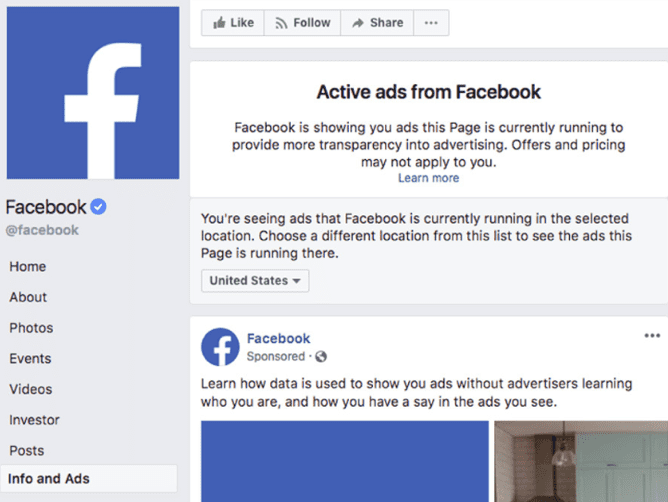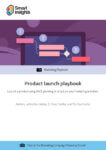The successful launch of a new mobile app ad campaign requires a targeted UAC approach
When launching a new mobile app, you may not have an advertising account history to leverage or a customer list to create a lookalike audience from on Facebook and Google UAC. This makes a successful ad campaign launch difficult since most user acquisition resources you read assume you will have those two items to work off of.
But, since your user lists and advertising accounts are brand new, you have to start from scratch to acquire app users.
Download our Individual Member Resource – Product launch playbook
This playbook will guide you through the process of how to successfully launch your product online.
Access the Product launch playbook
Below, we outline the user acquisition process that will lead to the successful launch of a new app campaign.
Perform a competitive analysis
It’s quite easy to run a competitive analysis on Facebook. Start by making a list of your competitors, both primary and secondary. Then, navigate to each of their Facebook pages. On their page, you will find a section labeled "Info and Ads" at the bottom of the left-hand column, this section will reveal a list of the ads that they've run to date.

Explore these advertisements and make note of the colour schemes, text placements, images, videos, and CTAs that are used most often. Compare these notes across your competitors and make a note of any trends you see. These trends will help guide your preliminary ad creation process. What works for your competitors' apps should, in essence, work for your app.
There are also a number of tools, including Social Ad Scout and Connect Explore, that can help you identify high-performing ads. They provide a robust database of ads that have run and are currently running on Facebook, Google UAC, and other display networks. Using these tools will help you reduce the risk of failure amongst your new ads and minimize wasted ad spend. It will also help your ads remain competitive against other mobile app advertisers' ads.
Adhere to Facebook best practices
Facebook and Google's latest algorithm changes are allowing mobile app advertisers to automate and manage their campaigns easier than ever before. Before these changes were made, app advertisers were manually running too many campaigns with audience targeting that was too narrow. Now, campaigns perform better without requiring manual ad set management, and the algorithms do the work for you. All you have to do is follow the platform best practices including:
- Choosing the right type of ad.
- Testing multiple bidding structures.
- Incrementally adjusting big amounts.
- Targeting your audience and ad placements.
- Using campaign budget optimization (CBO).
- Minimizing significant edits.
- Utilizing creative testing to develop optimized creative.
Select proper campaign goals
Facebook and Google UAC’s new algorithms manage several aspects of a launch campaign for you. However, for these algorithms to work properly, advertisers must direct them to follow the right campaign goals. For free-to-play apps, it’s best to first select the Mobile App Install (MAI) ad option. Eventually, you will transition to App Events and after your ad is completely optimized, you will move on to Value Bidding.
Mobile app install (MAI)
Employing the mobile app install campaign goal is the best option for advertisers launching new free-to-play apps. This ad format allows your audience to install your application in a few easy clicks. With this format, you receive quality installs that help you build a solid user base and collect data on your valuable users.
App events (AEO)
After you've tested the Mobile App Installs goal and have gained anywhere from 5,000 to 10,000 initial installs, we recommend transitioning to the App Events (AEO) goal. This campaign optimization goal targets in-app purchases.
Value bidding (VO)
Once you have accrued an ample amount (anywhere between 750 to 1,000) of in-app purchases with the AEO objective, you can start Value Bidding (VO). Value bidding allows advertisers to target top-spending users. This way you can dial into your highest-value users. Further, the algorithm can find more users that are likely to spend the way your highest-value users do.
Let algorithms and campaign goals work to achieve ROI
Algorithms need time to accurately determine your ideal app users, so be patient. Remember - refrain from making any substantial edits, like pausing the campaign or changing the budget by 30% or more, for the first seven days. Substantial edits may shift your campaign back into learning mode and can increase your CPMs.
As you move from campaign optimization goal to campaign optimization goal, you should anticipate paying more. App Events typically cost two to three times more than App Installs, and Value Bidding conversions tend to cost two to three times more than App Events. However, it's best to focus on the ROI you are receiving from these additional costs as opposed to the additional costs themselves.
Value Bidding generates a much higher ROI than an App Install would, which is why you are paying more. Just rest assured that this cost is slightly more due to the higher-quality, higher-value conversions you are generating.
Push for minimal creative fatigue
Once your campaigns have reached the Value Bidding objective, they should be profitable. This is when you will want to start to scale your spending. However, you may run into the complications of creative fatigue and audience saturation at this point.

As your budget increases, your ads begin to be shown to larger audiences - those audiences become saturated at a faster rate. The more frequently a user sees an ad, the more quickly they will begin to ignore that ad. Your ads will begin to fade and eventually start to fail.
Unfortunately, creative fatigue is another consequence of higher spend. We’ve found that winning Facebook creative is the most valuable aspect of an ad. Now that algorithms are able to optimize ads, creative stands as the only differentiator.
Maximize the lifespan of your creative assets by testing and developing top-performing creative. This way, your mobile app advertisements outperform other ads.
Steer clear of audience fatigue
In order to maximize the lifespan of your mobile app ad creative, you must develop a seed audience that is large enough to divide into smaller audiences. This will allow you to extract every possible new user out of each audience subset by creating lookalike audiences.
To do this, go to Facebook's ad manager, and select "Create a Lookalike Audience." From there, select the "Custom Audience With LTV" option to create a new custom audience with lifetime value data and enable value-based lookalike audiences.
Before you upload the LTV file, however, take the top 10% most valuable customers and multiply their value by ten. For example, if the top 10% of your audience is worth 99 cents, tell Facebook they are worth $9.99. Also, take the bottom 10% of your paying audience and reduce their value by 90%. So, if these customers are worth 50 cents, tell Facebook they are worth five cents.
By stretching the data, you allow Facebook to target more high-value prospects.
Then, define the location, number of audiences, and how many people you want the algorithm to find for you in the "Audience Size" section. If you want to extend the life of your creative, set this metric at around 2-3%. Hit "Create Audience" and you're done. This is a very simple way to use your own data to find new audiences.
The members of your newly created lookalike audiences will not have had exposure to your ads in the past, which will help extend the life of your creative and save you advertising dollars.
Final thoughts
Be patient. Launching an ad campaign for a new mobile app takes time and money. However, this process can be simplified and made less painful by following the best practices outlined above.
By utilizing data from your competitive analysis, you are better able to launch an ad with effective creative that can easily move throughout the different campaign goals. This way, you will minimize the amount of budget you burn. Once your campaigns are up and running, you can further optimize them using lookalike audiences to find new users.
Maximizing your audiences and creative will allow your ads to perform better, which means your mobile app launch can be more profitable. Keep these methodologies in mind for Facebook ad campaign success when launching your next new mobile app.
Brian Bowman is the CEO of
Consumer Acquisition, which provides a creative studio, tiered fully-managed user acquisition services and SaaS tools for social advertisers. They’ve managed over $1 billion in social advertising spend and created over 300,000 videos for companies like Glu, Wooga, UbiSoft, Playtika Nickelodeon, JamCity and many others.









